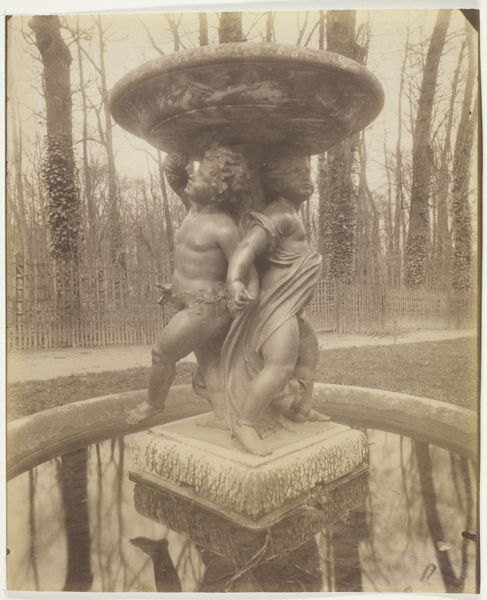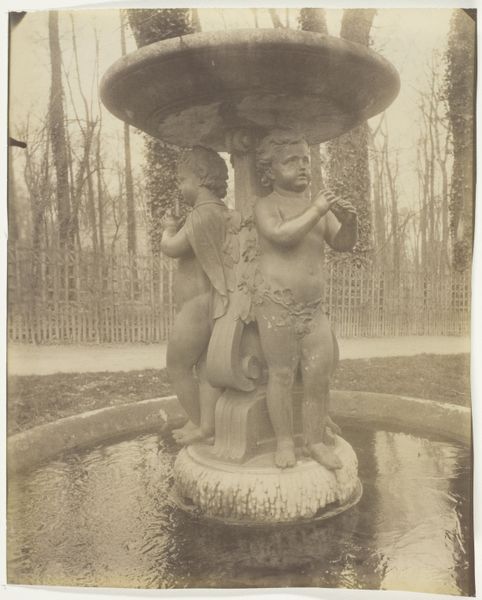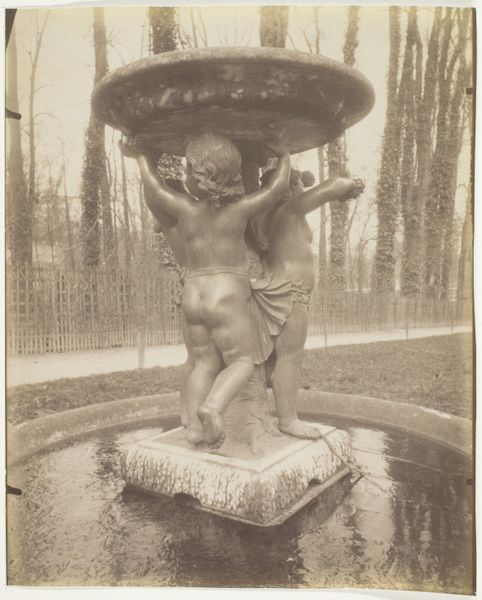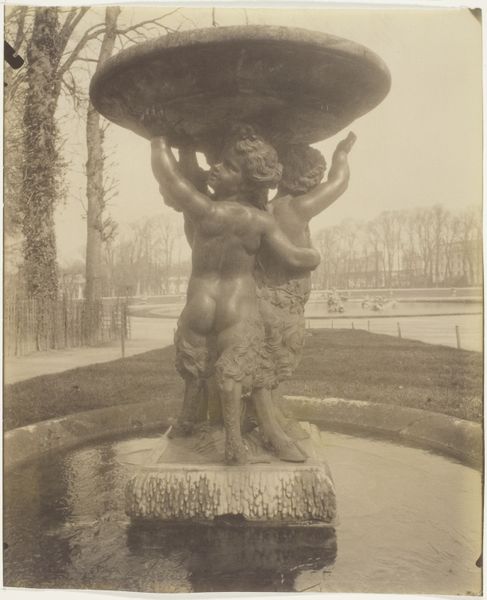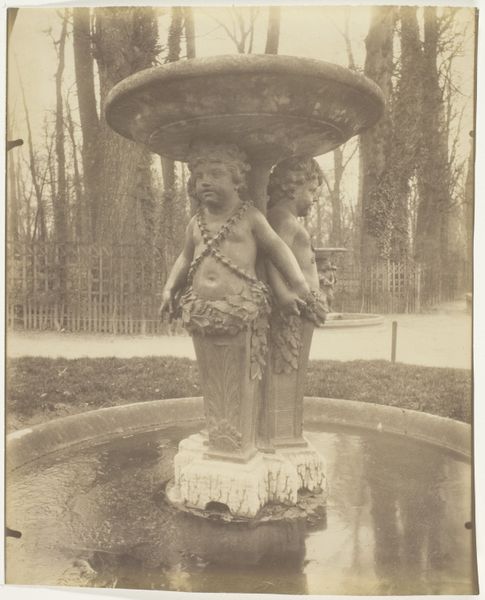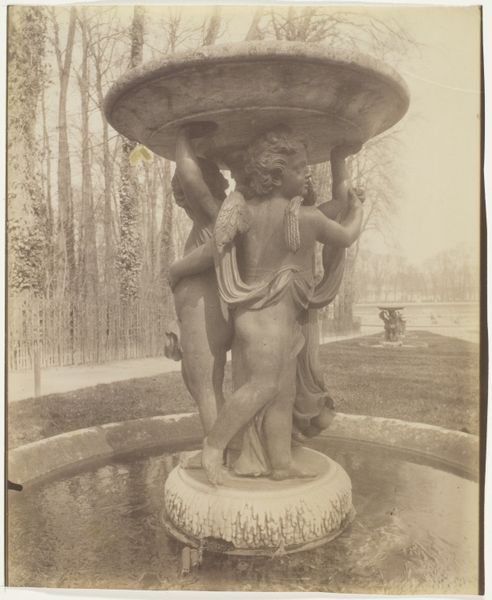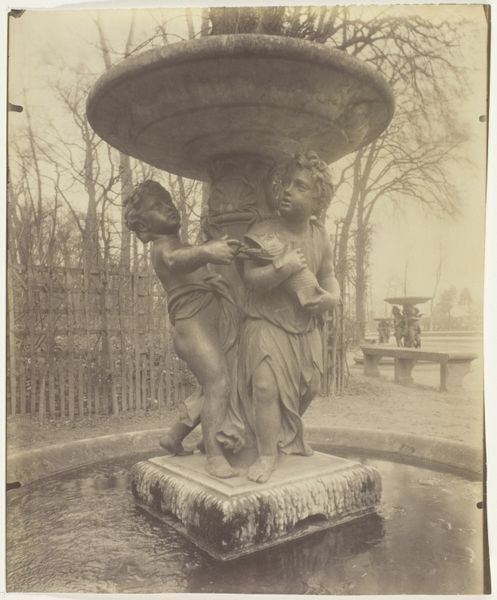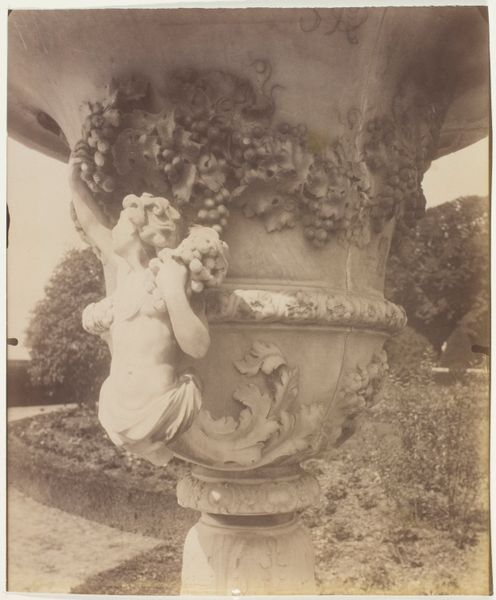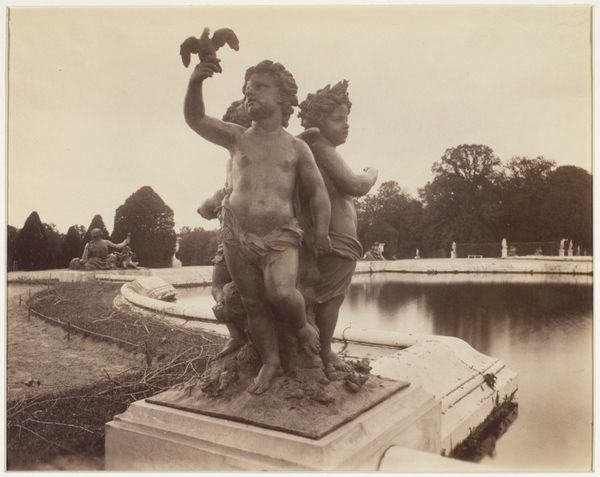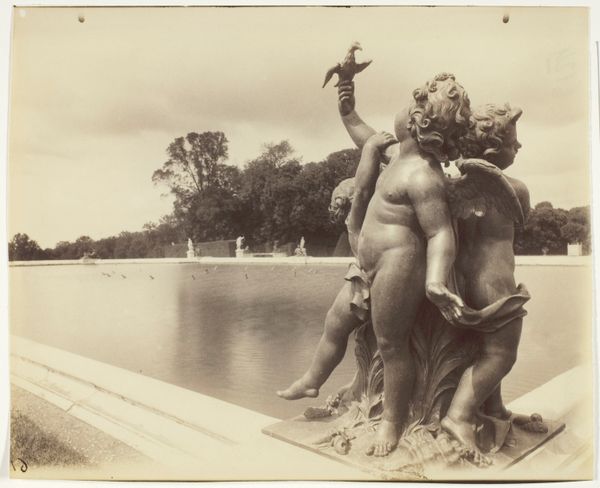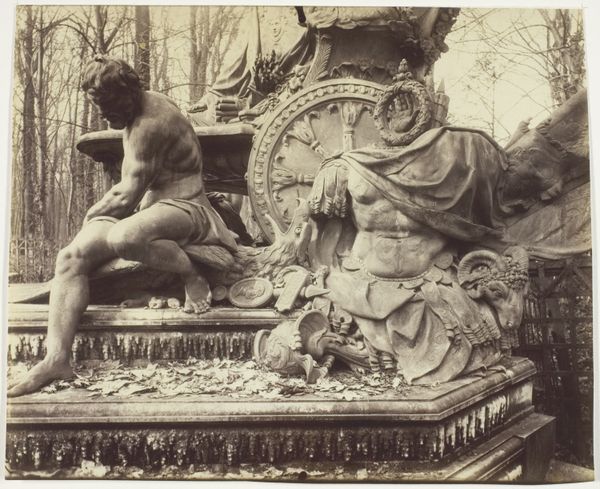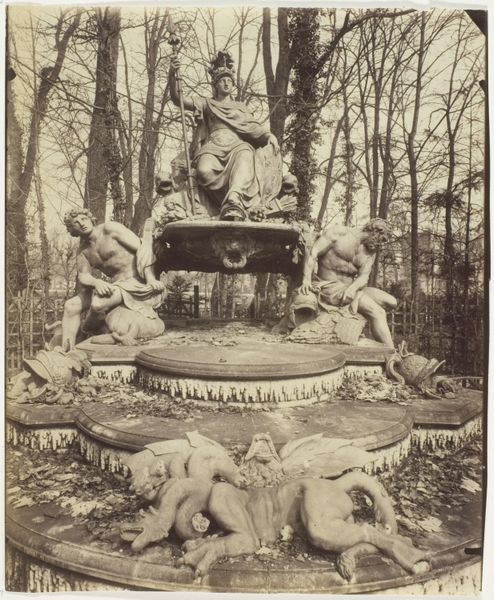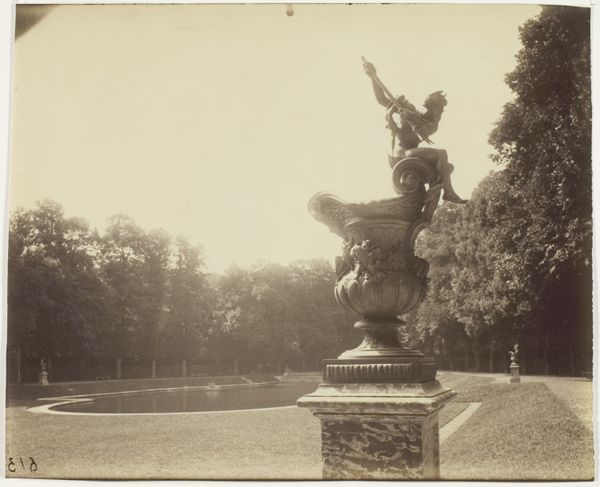
Dimensions: 21.3 × 17.7 cm (image); 21.3 × 17.9 cm (paper)
Copyright: Public Domain
Editor: Here we have Eugène Atget’s photograph, "Versailles, Les Marmousets," taken in 1906. It's a rather subdued image, almost sepia-toned, featuring a sculpture of cherubic figures. The composition is striking because of the somewhat grim quality, contrasting with the playful subject matter. What are your initial thoughts on the imagery used and the historical setting? Curator: Well, this photograph operates on multiple levels. Atget documented pre-modern Paris and its surrounding areas just as modernization efforts were ramping up. This image of the sculpture, existing in the carefully orchestrated space of Versailles, is a snapshot of the vestiges of French royalty on the eve of monumental societal changes, and mass destruction during the first World War. Editor: That makes me see the work differently! It isn’t just an aesthetic image; it speaks to a particular cultural and political context. So Atget, by capturing these relics, inadvertently contributed to the historical narrative. But does the simple recording of an artifact, by virtue of the political content of the thing itself, rise to political art? Curator: Interesting question. Is the photograph simply documentary, or is it politically charged by its very act of preservation? The institutions that collect and display Atget’s work clearly find value beyond documentation, positioning them as culturally significant artifacts in their own right. How do you see that tension between document and art playing out here? Editor: I guess it is in that space between documentation and preservation of imagery, that we might better understand the artistic or even political intent. It feels almost like a commentary on the transient nature of power and beauty. I see this picture now less as just a pretty image, and more as a layered observation on socio-political shifts. Curator: Precisely. It highlights the complexities of how we engage with history through visual representation. Photography itself, as a technology, complicates how the world is seen, archived, and understood by a mass public.
Comments
No comments
Be the first to comment and join the conversation on the ultimate creative platform.
